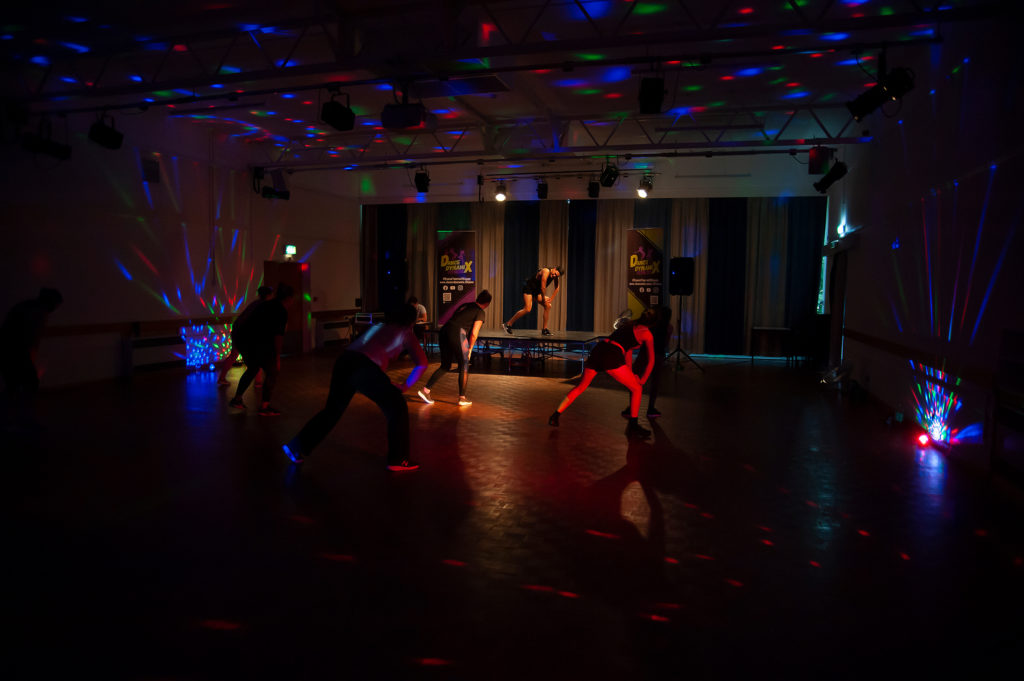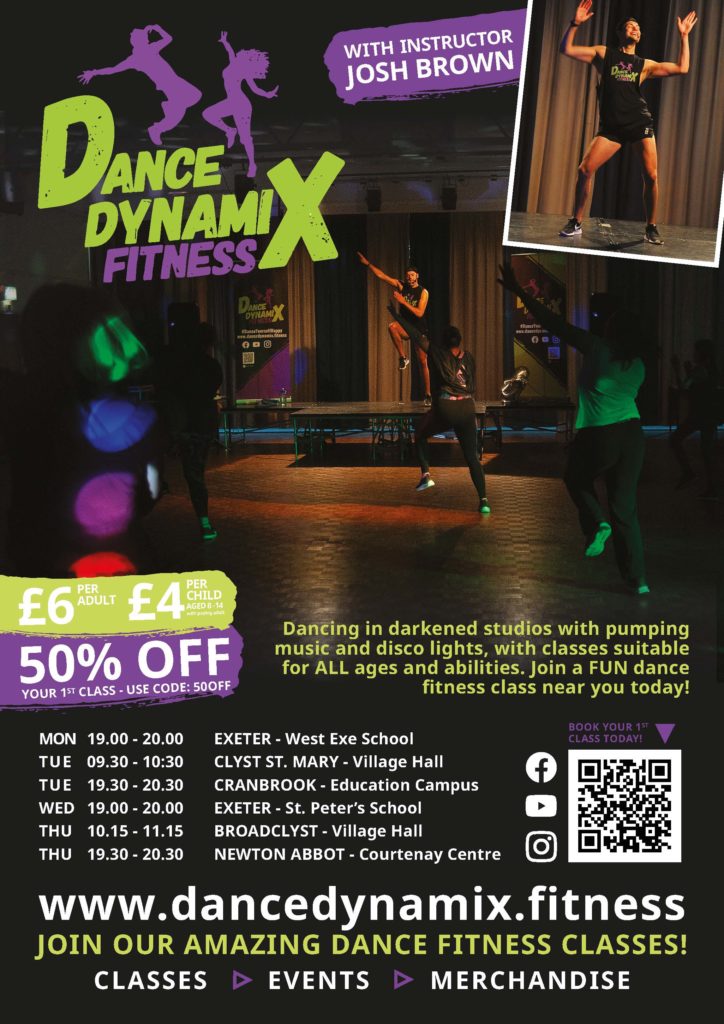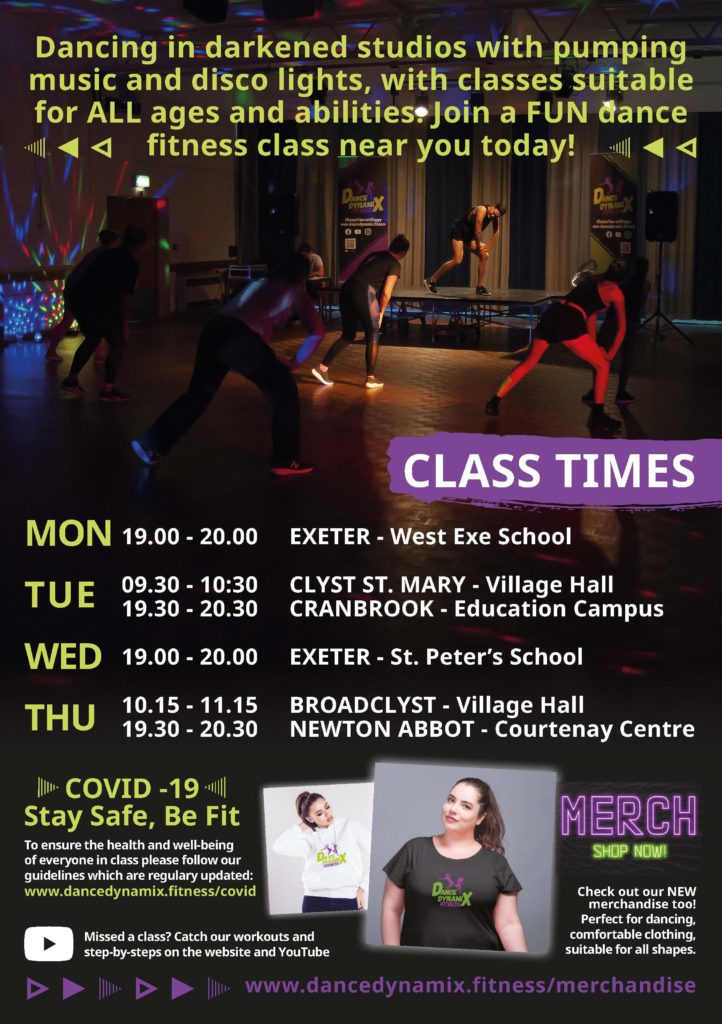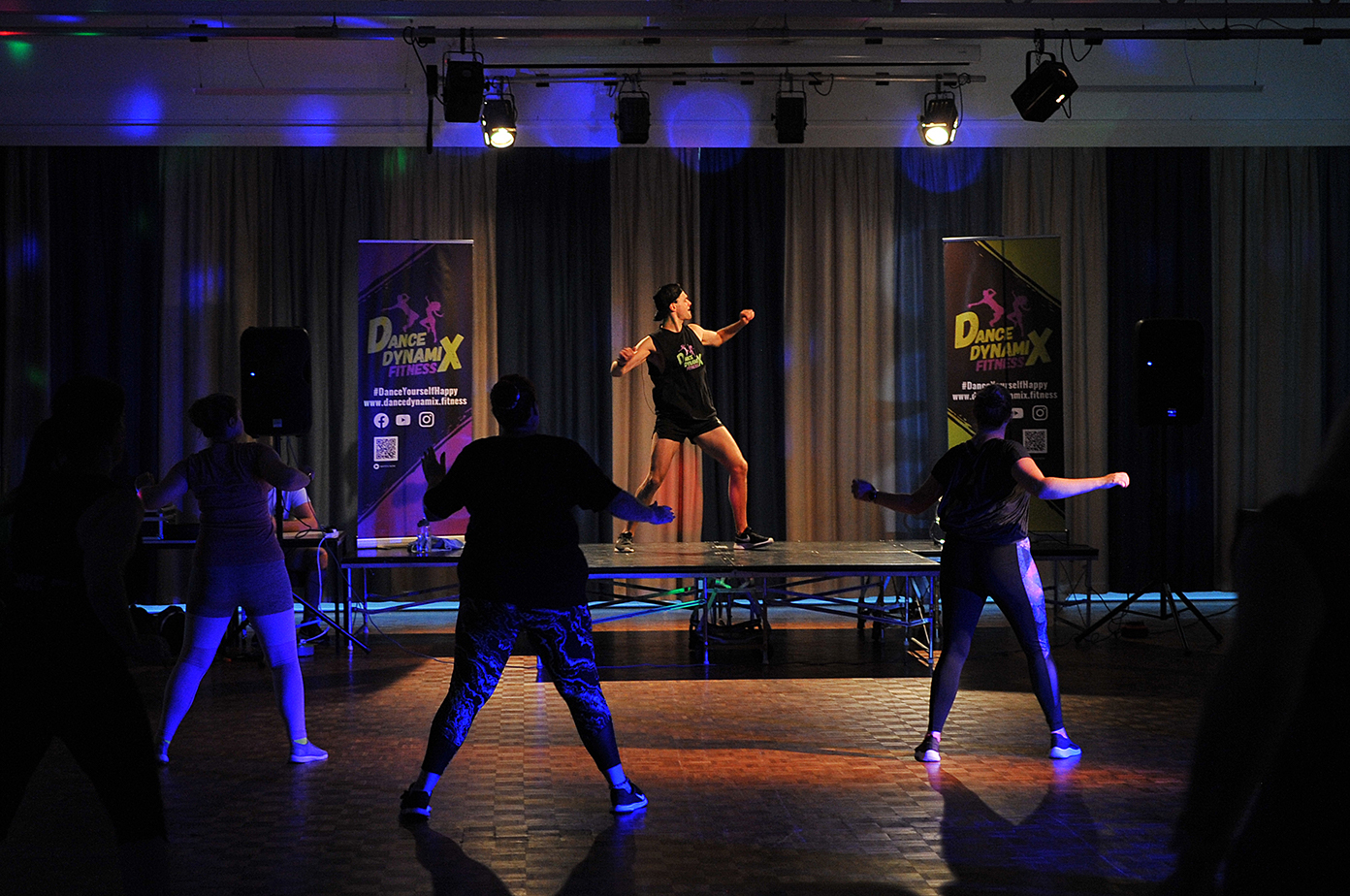Dance photography. All photographs © Al Macphee/MiraclePR
A dance photography case study featuring Dance Dynamix
The Background
Josh Brown’s Dance Dynamix classes have got several unique aspects to them. One, he shows that he really enjoys it; he’s not just like the glamorous person doing the aerobics class, he’s up there and he enjoys it. Second, it’s like being at a nightclub when you do his classes. You’re dancing along to the likes of Dua Lipa and her routines so you can go home and do your practice. You also dance in the dark. Not pitch black so you can’t see, but the light is on him so you can see what he’s doing and dance as if nobody’s watching.
Since COVID, there’s a certain class in the Newton Abbot area that just won’t take off again. The regular members don’t want to lose Josh but the numbers have dropped to around ten to twenty and he just can’t get them up again. So, he needed some help with his advertising. Myself and Joanne at Ablaze Design are working together on his flyers and banners. Ablaze are doing the design and I am doing the pictures and we try and get him as much PR as possible, essentially to get this class up and running again.
The Brief
Part of the brief was to create flyers and a banner for Josh which he would display outside the Courtenay Centre in Newton Abbot. He runs his Dance Dynamix classes there from 7.30 to 8.30pm on a Thursday evening.
The dance photography needed to reflect one of the key USPs of the classes – that you really can dance as if nobody’s watching. People might be embarrassed about getting the moves wrong but it doesn’t matter. You’re in the dark. Nobody cares if you get it wrong. Just dance. And that’s the best way to exercise.
The challenge
The trick was to show the effect of the nightclub lights and the fact that it’s dark, so you really can dance as if nobody’s watching. In the resulting dance photography, you can see there are people there but you’re seeing them as if they were in a nightclub. It’s dark. It’s lit with blues and purples and greens, all the nightclub lights and starbursts and whatever.
So the trick was to get some nice images of Josh, who is on stage in the spotlight in the distance, with people in the foreground, dancing. I had to be careful. I had to shoot from the back because if you’re advertising using that catchphrase – dance as if nobody’s watching – and you can see faces of people dancing, you’re contradicting yourself.

The dance photography technique
You’ve got to work your camera and flash settings out so that you don’t overpower the effect of the ambient lighting. But you also have to freeze the movement of any dancers, especially the instructor because everyone looking at the banner is going to be drawn to him. If he’s blurred, it’s not quite right.
Essentially, you are shooting a reasonably fast moving subject in the dark while capturing ambient light. You’ve got everything against you. The camera’s on manual. The flash gun’s on manual. The flash gun’s off camera so you are holding your camera in one hand. And the flash is being directed at all sorts of angles across the room.
Essentially, you are shooting a reasonably fast moving subject in the dark while capturing ambient light. You’ve got everything against you.
The thing with the flash is that your flash duration is very short. So, you can use that in conjunction with your slow shutter speeds to freeze movement. In theory, it’s like panning (I will be posting a blog on panning in the future, but in a nutshell, panning is a common technique for capturing a fast moving subject with slow shutter speeds).
With this style of dance photography, you need a slow shutter speed to capture the ambient lights. But you’ve got to get that happy medium because if you leave your shutter open for too long, everything will be blurred. So, your basic settings are a shutter speed of around 1/20 to 1/15 with a bit of flash.
Then you just shoot and shoot and shoot. You can’t predict what those lights are going to do. There’s no way, by seeing those lights once, that you’re going to get the routine together. You’re not. They may flash in a certain order, they may be random so you’ve just got to hope for the best.You just keep on shooting and one of the shots will be the one you want.
Now, the instructor, you’ve got to keep him sharp. Unlike the lighting, his movements are predictable. It’s a dance routine so he’s going to repeat the same poses. You watch the first 30 seconds and you’ve got the pattern. There will always be that split second of time where he holds himself steady or a slight pause before he moves his arm or his leg back to the starting position. It might be when he’s punching the air, for example.
When choosing your settings using your light meter, you should base them on the average lighting level. If you set your exposure while a massive spotlight is on, most of your dance photography will be too dark. That spotlight will be off for half of the routine and you will have your reds, yellows, blues and purples lighting up the ceiling, etc. Even with these settings, some pictures will still be too dark but most will be lit well.
The result
And here are the flyer and poster designs that resulted from our work. Time will tell if the promotional activity results in an increase in members back to pre-COVID levels. But I think we got across the point that you can dance as if nobody’s watching at Josh’s Dance Dynamix classes. What do you think?


Have a burning photography question you would like Al to write about in his next blog post? Email info@miraclepr.com with your request.

